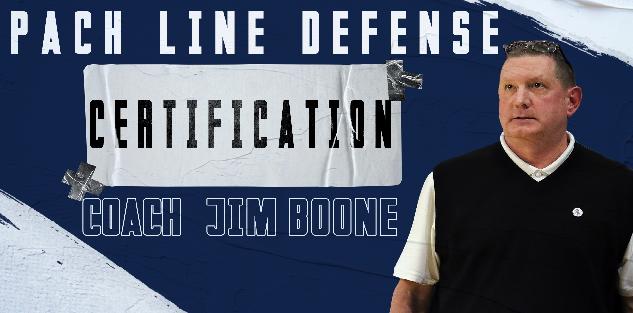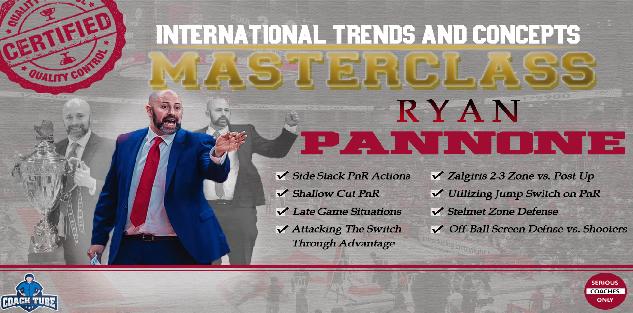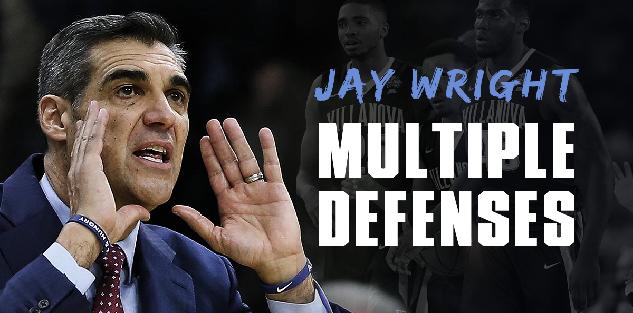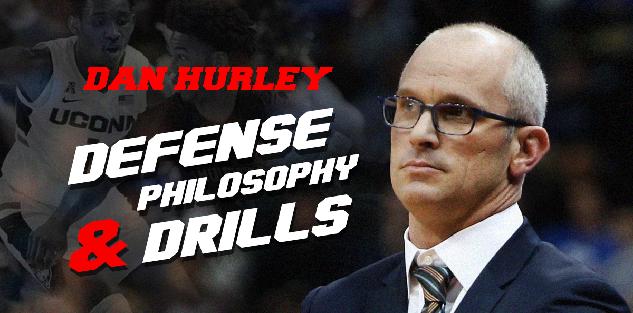Featured courses
- Two Great Game Situational Workouts For the Basketball Offseason by Grant Young
- Two Reads Basketball Players Must Understand Before Executing the Ball-Screen by Grant Young
- Two of LSU Coach Kim Mulkey’s Game-Winning Inbounds Plays by Grant Young
- Three Effective Early-Season Defensive Basketball Drills by Grant Young
- Four Essential Tips For Basketball’s 1-3-1 Zone Defense by Grant Young
- Four Zone Defense Drills to Strengthen Your Team by Grant Young
- How to Beat the Three Most Common Pick and Roll Coverages by Grant Young
- Two Drills to Improve Shooting at the Start of the Basketball Season by Grant Young
- Core Basketball Principles That Dallas Mavericks Coach Sean Sweeney Teaches by Grant Young
- Three Competitive Shooting Drills For Your Basketball Team by Grant Young
- How To Teach The ‘I’ Generation of Basketball Players by Grant Young
- Three Elite Drills to Begin a Basketball Practice With by Grant Young
- How to Build a Championship-Winning Basketball Team Culture by Grant Young
- Two of Texas Women’s Basketball Coach Vic Schaefer’s Tips For Team Culture by Grant Young
- Atlanta Dream WNBA Coach Brandi Poole’s Four Sets for Secondary Offense by Grant Young
- NC State Basketball Coach Brett Nelson’s 4 Crucial Point Guard Qualities by Grant Young
- Kentucky Coach Mark Pope’s Five Guard Rules For Offense by Grant Young
- McNeese State Basketball Coach Will Wade’s 4 Core Pillars by Grant Young
- 4 Tips To Instantly Improve Your Free Throw Shooting by Tyler Linderman
- Assemble a Championship-Caliber Basketball Rotation by Brandon Ogle
- Two of UConn Coach Dan Hurley’s Key Defensive Drills by Grant Young
- Four Post Moves All Basketball Forwards Should Have In Their Bag by Grant Young
- Four of Baylor Coach Nicki Collen’s Midseason Pick and Roll Adjustments by Grant Young
- WNBA Legend Sue Bird’s Two Tips For Attacking on Offense by Grant Young
- Houston Coach Kelvin Sampson’s Three Keys for Building a Basketball Program by Grant Young
- Two of Tom Izzo’s Top Michigan State Defensive Drills by Grant Young
- Four of Olympic Gold Medalist Coach Mechelle Freeman’s Relay Race Strategies by Grant Young
- Three Key Strategies Will Wade Uses to Build a Dominant Team by William Markey
- Five UConn Huskies Men’s Basketball Plays That You Can Use by Grant Young
- Three Tips for Maintaining Team Culture at the End of a Basketball Season by Grant Young
- Three Dribble Drive Motion Drills to Teach Your Basketball Team by Grant Young
- Three Dribbling Drills For Non-Primary Ball Handlers by Grant Young
- Four Advanced Ball Handling Drills For Basketball Guards by Grant Young
- Three Tips to Sharpen Your Post Player’s Footwork in Basketball by Grant Young
- These Three Pick and Roll Drills Are Crucial For Any Ball Screen Offense by Grant Young
- Three Closeout Drills to Improve Basketball Shooting Defense by Grant Young
- Three Tips to Perfect the Packline Defense in Basketball by Grant Young
- Four Keys to Executing the Read and React Offense in Basketball by Grant Young
- Three Tips to Develop Elite Basketball Shooters by Grant Young
- Three Crucial Keys to Executing the 5 Out Offense in Basketball by Grant Young
- These Three Offensive Sets Will Help You Beat Any Zone Defense by Grant Young
- Three Transition Basketball Drills To Play With More Pace by Grant Young
- Three 5 Out Offense Drills Any Basketball Coach Can Use by Grant Young
- Four Vital Techniques for a Motion Offense in Basketball by Grant Young
- Three Baseline Inbounds Plays To Win Your Basketball Team Games by Grant Young
- Four Drills For Sharpening the European Ball Screen Offense by Grant Young
- Three Positioning Tricks For a Basketball Zone Offense by Grant Young
- Three Rules to Perfecting Basketball's Lock Left Defensive System by Grant Young
- UCLA WBB Coach Cori Close’s Two Keys to Winning the Mental Game by Grant Young
- Four of Alabama Coach Nate Oats’ Favorite Basketball Drills by Grant Young
- Three Ways To Turn Transition Offense in Basketball Into Points by Grant Young
- Three Drills to Master Basketball's Pack Line Defense by Grant Young
- Three Transition Defense Drills to Halt Fast Breaks by Grant Young
- Four Offensive Rebounding Drills to Win Second Possessions by Grant Young
- 4 Defensive Technique Drills from Boston Celtics Assistant Coach Brandon Bailey by Marek Hulva
- 5 Drills to Improve Ball Handling by Tyler Linderman
- 13 FUNNY BASKETBALL GIFS by Alex
- BASKETBALL SPEED AND AGILITY: 8 QUESTIONS FOR COACHTUBE EXPERT RICH STONER by Jaycob Ammerman
- Defensive Strategies for Basketball by Ryan Brennan
- 4 Keys To Turning Your Program Into Championship Contender By Dallas Mavericks Coach Sean Sweeney by Marek Hulva
- 5 Components to Creating a Winning Basketball Program by Justin Tran
- Guide to Becoming a Lethal Scorer in Basketball by Justin Tran
- Zone Defense In the NBA Eastern Conference Finals by James Locke
- Mastering Court Mobility: Tips for Effective Movement in Basketball by Justin Tran
- 5 Basketball Shooting Drills: How to Develop a Sharpshooter by James Locke
- 6 Points of Emphasis for a Successful 5 Out Offense by Jaycob Ammerman
- Effective and Efficient Methods to Practice During the Basketball Season by Justin Tran
- Three Great Passing Drills From a Basketball Coaching Legend by Grant Young
- 7 Principles For Perfecting the Princeton Offense in Basketball by Grant Young
- How to Replicate A Modern NBA Offense by Grant Young
- Three Great Two-Ball Dribbling Drills For Basketball Development by Grant Young
- Two Rebounding Drills to Win Your Basketball Team Championships by Grant Young
- How to Improve Your Basketball Team’s Defense With the Shell Drill by Grant Young
- How Baylor Basketball’s Scott Drew Develops Elite Guard Play by Grant Young
- Off-Ball Movement Tips and Strategies: Lessons From the NBA Finals by James Locke
- Player Development: Scott Drew’s Tips for Producing NBA Guards by James Locke
- How to Execute a Spread Offense in Basketball by Grant Young
- Four Quality Quotes From Four Final Four Coaches by Grant Young
- A Guide to the Pack Line Defense by Alex Martinez
- 3 Defensive Build Up Drills to Improve Team Basketball Defense by Grant Young
- Battle of Two Great Coaches: Best Plays from the NBA Finals Contenders by Justin Tran
- 10 Creative Ways Athletic Programs Can Use a Video Board to Raise Money by Coach Williams
- How to Use 3 on 3 to Improve Your Basketball Team by Grant Young
- How to Defend the Pick and Roll by Grant Young
- Mastering Basketball Defense: Techniques, Drills, and Strategies for Success by Justin Tran
- Three Tips From The Coach Who Developed Giannis Antetokoumnpo by Grant Young
- 2023 NBA Draft: Skills and Technique from Top Prospects by Justin Tran
- From College to the Pros: Transitioning the Dribble Drive Offense by Justin Tran
- Positionless Basketball: Redefining Roles on the Court by Justin Tran
- Revolutionize Your Offense: Proven Concepts to Elevate Your Basketball Game by Justin Tran
- 5 Essential Fastbreak Drills Every Basketball Coach Should Know by James Locke
- How to Run a Circle Offense in Basketball by Grant Young
- Game-Changing Strategies: ATO Plays in the EuroLeague and Olympics by Justin Tran
- How to Stand Out at Basketball Tryouts by Grant Young
- How to Improve Your Basketball Team’s Transition Defense by Grant Young
- Indiana Fever GM Lin Dunn’s Two Keys For Women’s Basketball Coaches by Grant Young
- Strength Training Strategies Every Basketball Player Should Have by Grant Young
- A WNBA Basketball Coach’s Four Priorities In Transition Defense by Grant Young
- Three Adjustments to Make When Your Basketball Offense Isn’t Working by Grant Young
- Three Pillars to Applying Defensive Pressure on the Basketball Court by Grant Young
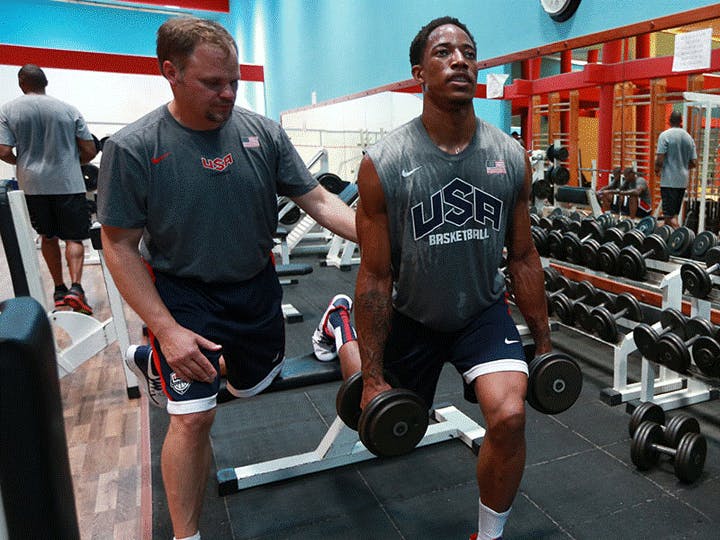
Strength Training Strategies Every Basketball Player Should Have
- By Grant Young
In basketball, strength is an essential attribute for any player. It provides a competitive edge when vying for rebounds, maintaining position, and driving to the basket. Moreover, being strong enables players to endure physical challenges from opponents, allowing them to execute plays with greater efficiency and resilience. Additionally, strength is indispensable for executing effective screens, fending off defenders, and playing robust defense. Ultimately, being strong not only enhances an individual player's performance but also significantly contributes to their team's overall success on the court.
Despite these clear benefits, it's surprising to see how strength is often undervalued. While attributes like speed, shooting, and ball-handling skills are highly praised, the significance of physical strength is frequently overlooked. Many people fail to recognize the crucial role that strength plays in the game. It's often underappreciated how strength enables players to hold their ground, power through contact, and execute powerful moves on the court. Despite these contributions to a player's effectiveness, strength is frequently not given the recognition it deserves in basketball.
One potential reason why basketball players don’t emphasize getting strong as part of their off-season workouts is because they don’t know how they should be increasing their strength while not sacrificing their athleticism and agility on the court. Many believe that lifting as heavy weight as possible all the time is the only reason to get strong. But in reality, there are plenty of ways to get stronger without becoming a powerlifter or putting one’s body at risk of unnecessary injury in the weight room. And Kostas Chatzichristos is the perfect person to teach you how to do so.
Kostas Chatzichristos is currently the Director of Performance at the Turkish powerhouse Fenerbahce Beko Istanbul. He is responsible for player athletic development and rehabilitation, as well as medical and performance staff management.
An eleven-year veteran in the Euroleague, prior to Fener Kostas held the same role at CSKA Moscow for eight years.
Coach Chatzichristos’ ‘In Season Strength and Power Training’ course analyzes his philosophy in building in-season strength programs during a game-dense season, which makes it the perfect tool for basketball coaches and players to employ when building out their own strength programs.
Why Strength is Important in Basketball?
Before Coach Chatzichristos discusses how to build out a strength training regiment for basketball players, he outlines why it’s important to have one in the first place.
He begins by noting that every athletic, dynamic move that’s made on a basketball court is based on having strength. Given how much basketball is predicated on being explosive and making quick, powerful movements, having insufficient strength compared to peers and opponents is a significant disadvantage not only during the course of a game but also during a season and a career.
Another important reason to build strength is the benefit it has on getting and staying healthy. Coach Chatzichristos says that having an “injury prevention” strength-building program isn’t accurate because there’s no way of truly preventing an injury from occurring in an athletic competition, but you can try to minimize the possibility of somebody getting hurt. The reason that strength building when it comes to minimizing injury is due to the joint stability it provides, the muscle fiber strength it offers, it strengthens tendons, and it also helps improve fatigue resistance. Given how difficult basketball can be in terms of endurance and cardio, building up a capacity to perform on the court for longer without getting tired is a massive benefit.
Program Design
When it comes to designing a strength program in the season for a basketball team, there are a couple of crucial components that a coach must consider.
One is that, regardless of what level you’re going to be coaching at (assuming it isn’t professional basketball), your players are already going to be pressed for time. Not only will they have actual on-court basketball practice to deal with, but they also have school, as well as family and social obligations. This means that when you get your players into the weight room, you need to make the time efficient and engaging, as players who aren’t as into strength training can get bored.
It’s also important to alternate workouts between hard and medium. Not every day should be a hard day (especially during the season, when the focus needs to be on performance in the game), but not every day can be easy or medium because progress (or at least maintenance) must be made, or else there’s no point of strength training at all. But you certainly don’t want your players getting too tired or sore to the point where it affects their performance.
Dividing players up into small groups is also a great idea because it will keep players more focused and allow the coach to give more direct, individualized feedback because they don’t need to worry about an entire team at once.
Weekly Schedule Overview
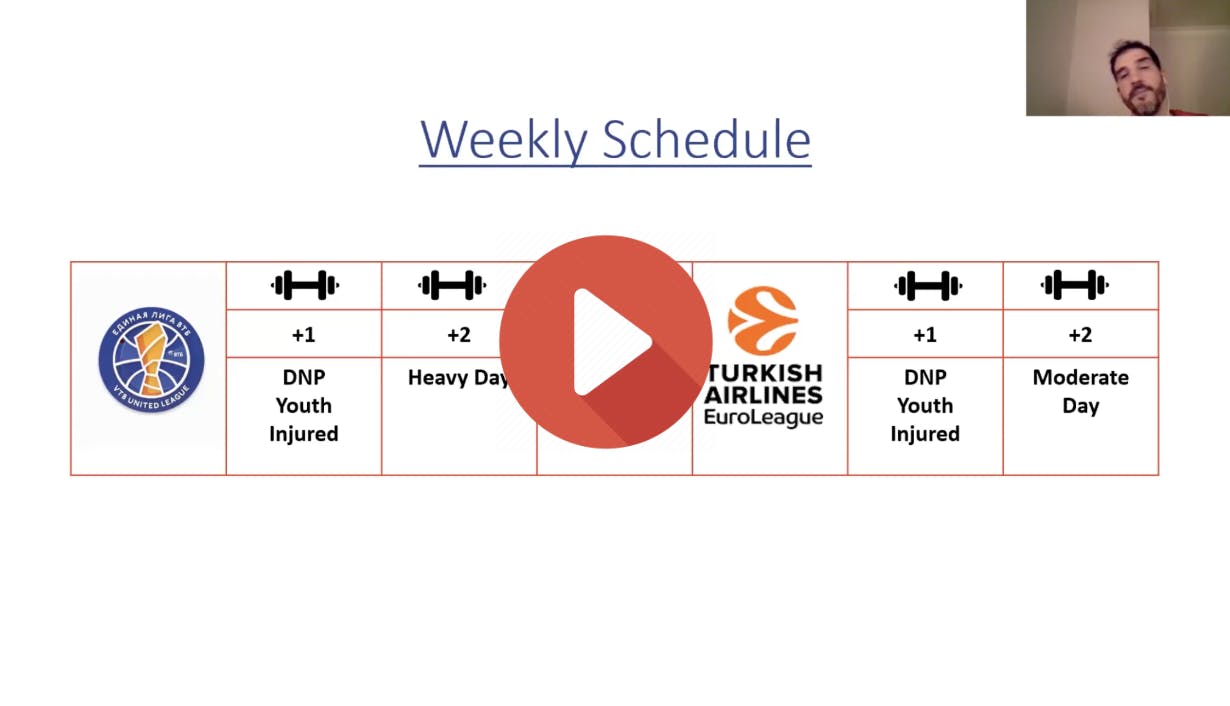
In the sample weekly strength training program that Coach Chatzichristos curates for teams who are in the middle of their season, the first day after a game should be meant for rest (at least in the weight room) for all the players who played a lot in the game. But for anybody who didn’t play or is injured, they should be getting a good heavy weightlifting session in. The next day will be heavy for everybody, and then the day after that (which is the day before a game begins) will be catered to each player’s individual needs.
If the next day is a game day, there should be no weight room work. And then the following two days after that game day will be the same as the first game day from that week, aside from the weight lifting being moderate difficulty instead of heavy on the second day.

